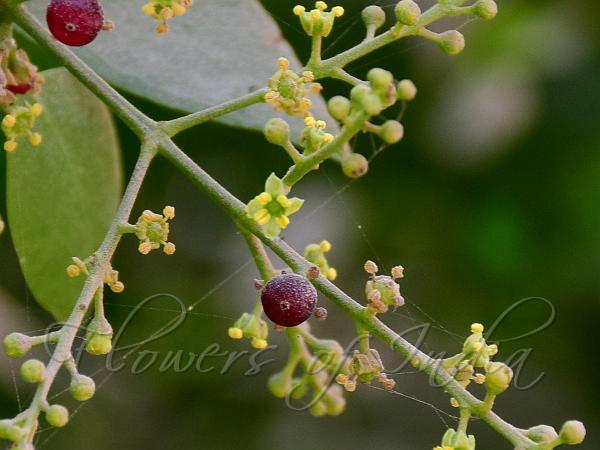|
| Toothbrush Tree |
|

|

| File size | 225666 |
| Original date | 1/6/16 2:24 PM |
| Resolution | 1200 x 900 |
| Flash | Flash did not fire |
| Focal length | 75.0mm |
| Exposure time | 1/160s |
| Aperture | 7.1 |
| Focus Distance | |
| Metering Mode | Multi-segment |
| Camera make | NIKON CORPORATION |
| Camera model | NIKON D5300 |
| Sensor type | OneChipColorArea |
|
|
|
|
Photo: |
Botanical name: Salvadora persica Family: Salvadoraceae (Salvadora family)
The toothbrush tree is a small tree or shrub with a crooked trunk, seldom
more than one foot in diameter, its bark scabrous and cracked, whitish with
pendulous extremities. The root bark of the tree is light brown and the
inner surfaces are white, the odour is like cress and its taste is warm and
pungent. Its fibrous branches have been used as toothbrushes by many
Islamic communities — miswaks. Leaves oblong-elliptic to almost circular, 3
x 7 cm, light to dark green, rather fleshy, sometimes with wartlike
glandular dots and dense, rather loose hairs; apex broadly tapering to
rounded, sharp-tipped; base broadly tapering; margin entire; petiole up to
10 mm long; leaves in opposite pairs. Flowers greenish to yellowish, very
small, in loose, slender-branched axillary or terminal panicles, up to 10
cm long. Fruit spherical, fleshy, 5-10 mm in diameter, pink to scarlet when
mature, single seeded; seeds turn from pink to purple-red and are
semi-transparent when mature. The generic name was given in 1749 in honour
of an apothecary of Barcelona, Juan Salvador y Bosca (1598-1681), by Dr
Laurent Garcin, botanist, traveller and plant collector. The true specimen
of this species came, as the specific name indicates, from Persia.
| Identification credit: Dinesh Valke | Photographed at Vaghbil, Thane, Maharashtra. |
• Is this flower misidentified? If yes,